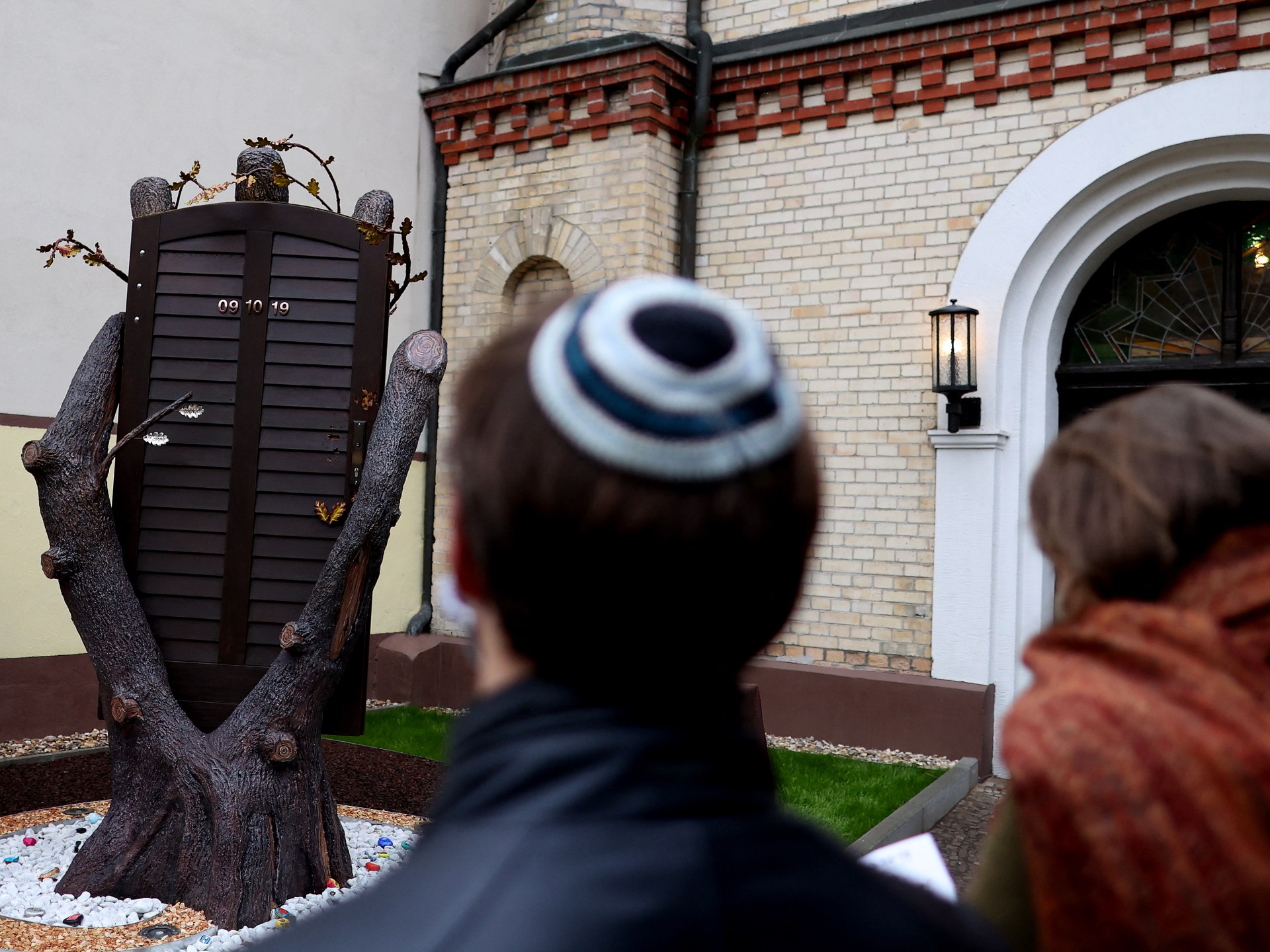Representative Adam B. Schiff Campaign strategy of spending millions to highlight the Republican Senate candidate Steve Garvey His conservative record appears to have paid off, making Garvey a heavy favorite to exit Tuesday's primaries as Schiff's opponent in the general election.
That is the discovery of the last UC Berkeley Institute of Government Studies poll co-sponsored by The Times. The poll finds that Schiff, the veteran Democratic congressman from Burbank, and Garvey, the former star first baseman of the Dodgers, in fact, he tied for the lead in the primaries just days before the election.
Schiff's effort appears to be outpacing his main rival, Rep. Katie Porter of Irvine, a fellow Democrat, who is in third place.
In the general election, Schiff would be a heavy favorite to beat Garvey in heavily Democratic California. The poll finds Schiff starting with a significant lead in a two-way matchup, 53% to 38%, with 9% undecided. By contrast, a general election between Schiff and Porter would start tied, with 4 in 10 voters undecided, according to the poll.
In the primary, Garvey has the support of 27% of likely voters, 25% of Schiff and 19% of Porter. Rep. Barbara Lee (D-Oakland) gets 8%, while 12% of likely voters choose a different candidate and 9% are undecided.
Political consultants who track the results of mail-in ballots expect Tuesday's primaries It will be a low participation issue, with an electorate that is significantly older, whiter and more Republican than the state's voting population as a whole.
“The makeup of the turnout favors Schiff and Garvey and hurts Porter,” who is more popular among younger voters, said Mark DiCamillo, poll director for the Institute of Governmental Studies and a longtime California pollster.
A low turnout that is more conservative than the norm could also spell trouble for Proposition 1Gov. Gavin Newsom's latest effort to address homelessness and change the state's 20-year-old Mental Health Services Act.
The ballot measure includes $6.4 billion in bonds to build facilities that will provide 10,000 new treatment beds for people with serious mental illnesses.
According to the survey, half of likely voters support the initiative, 34% oppose it and 16% remain undecided. Although this is a significant advantage, ballot measure supporters generally want to see support above 50% because undecided voters tend to vote against it.
Several important Republican figures have backed the bonus measureBut the poll shows that a large majority of Republican voters oppose it, while Democrats support it.
“The dynamics of low-turnout California elections are pretty much set in stone,” said political data expert Paul Mitchell.
“Those dynamics are senior overachievement and homeowner overachievement. “Latinos are underperforming and Republicans are overperforming,” she said. That combination gives Garvey a significant boost at this stage of the election, he added.
Among the 20% of people who had already voted when Tuesday's poll concluded, Schiff led with 35%, with Garvey with 28%. Garvey does better with people who plan to vote on Election Day, while Schiff does better with people who plan to drop off their ballots before Election Day, the survey showed.
For much of last year, the Senate race was primarily defined by Lee, Porter and Schiff, a trio of Democrats with similar voting records – all looking for ways to stand out in the race to succeed the late Senator Dianne Feinstein.
Schiff directed for much of last year with Porter hot on his heels.
Both raised millions of dollars driven by their respective abilities to appeal to Democrats across the country.
goalie inquisitions Criticism from Wall Street executives during congressional hearings made her a favorite of liberal voters – particularly young ones – angry about inequality and corporate greed.
Schiff reputation as one of former President Trump's main opponents He created a source of loyalty among Democratic voters who were impressed by his work when he was chairman of the House Intelligence Committee and a leading impeachment manager.
Older voters were also attracted to Schiff, who got the support of most of the party's established leaders, starting with former House Speaker Nancy Pelosi (D-San Francisco).
All of these factors contributed to a generational clash among Democrats until Garvey joined the fight in October.
garvey Schiff gave entry the opportunity to take advantage of the state's top-two primary system, in which the two candidates who receive the most votes in the primary advance to the general election, regardless of party.
Because Democrats outnumber Republicans by such a wide margin in California, a Democrat who ends up with a Republican opponent in a state general election starts with a big advantage.
Schiff has spent more than $25 million on television advertising, most of which has framed the race as a two-candidate race between him and Garvey. An outside group of Schiff allies has spent an additional roughly $10 million on a similar effort.
Garvey's campaign has spent just $1.4 million as of mid-February.
Schiff's ads, which do not mention Porter, describe Garvey as “too conservative for California.” They appear to have had the desired effect of endearing Garvey, a first-time candidate, to Republicans who previously knew little about him beyond his past as a baseball star. About two-thirds of likely Republican voters now support him, the poll found.
Porter has also been subjected to approximately $10 million in attack ads from outside group funded by Silicon Valley billionaires and cryptocurrency investors.
That appears to have hurt his standing with voters. In the current poll, 27% of likely voters had an unfavorable opinion of her, a jump of 11 percentage points from the last survey in early January. However, her image remains favorable overall: 45% of likely voters view her favorably and 28% of likely voters have no opinion of her.
While Garvey, with the help of Schiff, consolidated the Republican vote, the congressman made inroads among the Democrats. The poll found him ahead of Porter among Democratic voters, 40% to 30%.
Garvey, Schiff and Porter are basically tied among voters without party preference.
Schiff has an advantage in the state's two largest population centers, Los Angeles County and the San Francisco Bay Area. In the Bay Area, she has the support of 28% of voters, with Porter in second place with 24%. In Los Angeles County, her home territory, Schiff has 28%, followed by Garvey with 22%.
In the last Times poll conducted in January, Porter was leading in his territory, Orange County, by double digits. Now Garvey has surpassed her in the populous county, earning 34% support among likely voters. Porter has 30%.
Garvey also has important leadership in the Central Valley, Inland Empire and San Diego County.
As he has become better known, the percentage of voters who view Garvey both favorably and unfavorably has increased. Currently, likely voters are very divided: 36% have a favorable opinion and 37% have an unfavorable opinion, while 27% have no opinion of him.
Nearly half (47%) of likely voters had a favorable opinion of Schiff, while 37% had an unfavorable opinion and 16% had no opinion.
When asked what issues were most important to their vote, 55% of likely voters said protecting abortion rights was very important and 51% said the same about being a strong opponent of Trump. Those two were the main motivators listed by Schiff and Porter supporters.
The next most important issue, ranked as very important by 46% of likely voters, was support for stricter immigration laws. Among Garvey supporters, 94% said that was very important.
The starkest fault line is age: Porter does better than his opponents with voters under 50. He leads both Schiff and Garvey with voters under 40 by double-digit percentages. Schiff and Garvey are essentially tied with likely voters over 65 (35% to 34%).
He Berkeley IGS Survey was held online in English and Spanish from February 22 to 27.
It surveyed 3,304 registered California voters who have already voted or are considered likely to participate in Tuesday's primary. Because the results were weighted to match census and voter registration benchmarks, the margin of error estimates may be imprecise; However, the poll's estimated margin of error for likely voters is 2 percentage points in either direction.












